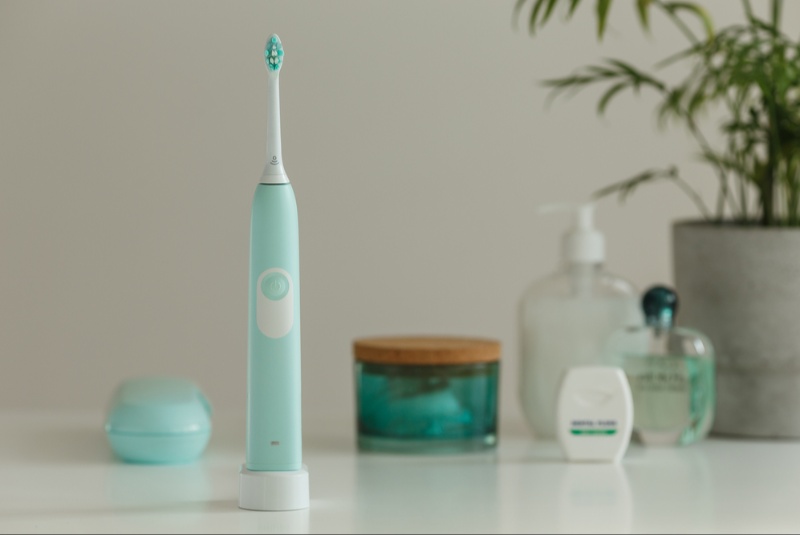Electric toothbrushes are a vital tool in maintaining dental hygiene, offering superior cleaning capabilities compared to traditional manual toothbrushes. This comprehensive guide explores key features and considerations to help you select an electric toothbrush that enhances your oral health regimen.
Understand the Benefits of Electric Toothbrushes
Electric toothbrushes provide a range of benefits over manual brushing, including more effective plaque removal, improved gum health, and enhanced stain removal on teeth. These devices work by delivering rapid bristle motions, either through oscillation or sonic technology, to effectively clean hard-to-reach areas and along the gumline. People with limited manual dexterity, such as those with arthritis, may find electric toothbrushes easier to use, ensuring better overall cleaning. Additionally, electric toothbrushes are known to be particularly effective in reducing gingivitis and other gum diseases compared to manual brushing, as they can provide consistent brushing pressure and technique.
Assess Different Types of Brushing Technology
There are primarily two types of electric toothbrush technologies: oscillating and sonic. Oscillating toothbrushes have small, round heads that rotate back and forth to remove plaque. A famous example is the Oral-B series, which claims to perform thousands of rotations per minute for thorough cleaning. Sonic toothbrushes, like those from Sonicare, use vibrating bristle technology at extremely high frequencies that can help dislodge plaque even beyond the physical contact of the bristles by inducing fluid dynamics. Both types are effective, but your personal preference for a cleaning method might sway your choice. Understanding these technologies can help you choose a brush that feels comfortable and is effective for your dental hygiene needs.
Choose the Right Brush Head Size and Shape
The size and shape of the brush head are crucial for comfort and effectiveness. Smaller brush heads are recommended for better reach to all areas of the mouth, including the back teeth and hard-to-reach spots. Some electric toothbrushes offer different brush head options, such as heads designed for orthodontic care, gum care, or whitening. Consider what your specific needs are, including any advice given by your dental professional, when selecting the brush head. A well-chosen brush head can significantly enhance the effectiveness of each brushing session, ensuring comprehensive plaque removal and gum health.

Consider Brushing Modes and Settings
Many electric toothbrushes come with various modes and settings tailored to different dental needs. Common modes include daily clean, gum care, sensitive, whitening, and deep clean. These settings adjust the brushing speed, motion, or time to cater to specific aspects of oral health. For example, sensitive modes are great for those with tender gums or teeth, while gum care modes might focus on stimulating and massaging the gums. Evaluate what particular oral health concerns you have and choose a toothbrush that addresses those needs through specific modes.
Evaluate Battery Life and Charging Options
When selecting an electric toothbrush, consider the battery life and charging options. Some models use rechargeable batteries that can last weeks on a single charge, which is convenient for travelers. Others may require frequent battery replacements. Look also at the charging method: some toothbrushes charge via a standard charging stand, while others might have modern solutions like USB charging or even wireless charging capabilities. These factors will affect how often you need to charge your toothbrush and how conveniently you can maintain its power supply.
Look for Ease of Use and Additional Features
The overall design of the toothbrush should promote ease of use. Features such as waterproof handles, non-slip grips, and easy-to-replace brush heads can enhance user experience. Additionally, many modern electric toothbrushes include built-in timers and quad pacers that ensure you brush adequately in all quadrants of your mouth for the dentist-recommended two minutes. Some high-end models even come with Bluetooth connectivity, allowing you to connect your toothbrush to a mobile app that tracks your brushing habits and provides feedback to improve your technique. These features not only make the brushing process more efficient but also more interactive and informative, potentially improving your overall dental care routine.
Consider Durability and Warranty
The durability of an electric toothbrush is an important consideration. Look for models that are built to last, with strong, water-resistant materials that can withstand daily exposure to water and toothpaste. Additionally, check the warranty period provided by the manufacturer. A longer warranty can provide peace of mind, ensuring that you are protected against potential repairs or manufacturing defects.
Examine Cost and Value
Electric toothbrushes can range widely in price, from basic models under $30 to high-end models costing over $200. Decide on your budget and consider which features are must-haves. It’s often worth investing in a mid-range to high-end model if it offers significant benefits for your dental health, such as multiple modes, long battery life, or connectivity features. However, even some less expensive models can offer excellent cleaning efficiency, so weigh the cost against the expected benefits and features.
Read Reviews and Seek Recommendations
Before making a final decision, read user reviews and seek recommendations from dental professionals. Reviews can provide insight into the long-term durability and effectiveness of different models, as well as user satisfaction with the product’s features. Additionally, your dentist or dental hygienist might have recommendations based on your specific oral health needs.
By carefully considering each of these factors, you can select an electric toothbrush that not only fits your personal preferences and budget but also effectively supports your overall dental health. Good oral hygiene practices, combined with the right tools, can lead to a healthier mouth and a brighter smile.




